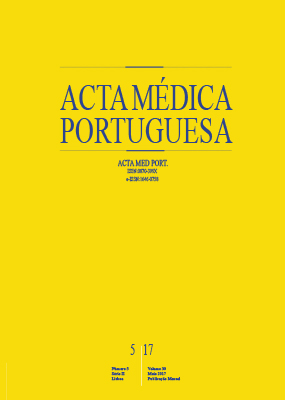Gorlin-Goltz Syndrome: Diagnosis and Treatment Options
DOI:
https://doi.org/10.20344/amp.7521Keywords:
Basal Cell Nevus Syndrome/diagnosis, Basal Cell Nevus Syndrome/therapyAbstract
The Gorlin-Goltz syndrome is a rare autosomal dominant hereditary condition, with complete penetrance and variable expressivity. Characterized by the appearance of multiple basaliomas, and often the development of keratocyst, it can also express itself by the presence of palmar/plantar depressions, calcification of brain sickle, and skeletal birth defects, although less frequently. This article presents two cases involving direct relatives, referred after the identification of several basaliomas and jaw cysts. After establishing the diagnosis, given the identification of three major criteria, the treatment consisted in the excision of the lesions followed, in one case, with vismodegib treatment resulting in complete remission. Gorlin-Goltz syndrome is therefore a multidisciplinary challenge, whose variable morbidity and high risk of recurrence make treatment and surveillance critical. However, new molecular targeted therapies have brought a new hope in treating these patients.
Downloads
Downloads
Published
How to Cite
Issue
Section
License
All the articles published in the AMP are open access and comply with the requirements of funding agencies or academic institutions. The AMP is governed by the terms of the Creative Commons ‘Attribution – Non-Commercial Use - (CC-BY-NC)’ license, regarding the use by third parties.
It is the author’s responsibility to obtain approval for the reproduction of figures, tables, etc. from other publications.
Upon acceptance of an article for publication, the authors will be asked to complete the ICMJE “Copyright Liability and Copyright Sharing Statement “(http://www.actamedicaportuguesa.com/info/AMP-NormasPublicacao.pdf) and the “Declaration of Potential Conflicts of Interest” (http:// www.icmje.org/conflicts-of-interest). An e-mail will be sent to the corresponding author to acknowledge receipt of the manuscript.
After publication, the authors are authorised to make their articles available in repositories of their institutions of origin, as long as they always mention where they were published and according to the Creative Commons license.









